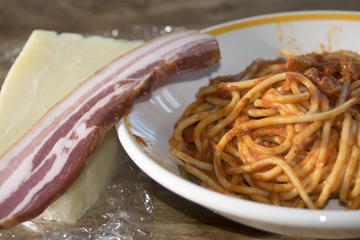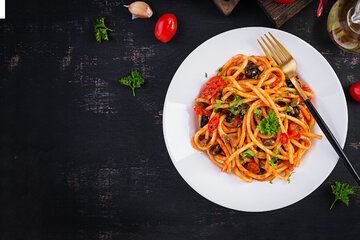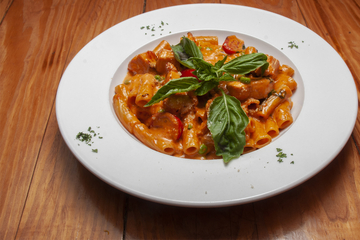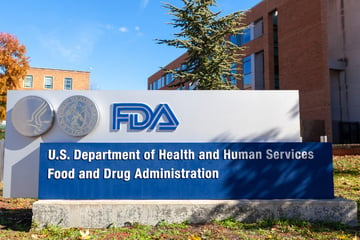Alfredo sauce recipe: How to make an authentic and easy Alfredo sauce
Your typical restaurant Alfredo sauce will make you feel heavy and bloated, but it doesn't have to be that way. Don't over-complicate things and, instead, use this simple and traditional Alfredo pasta recipe.
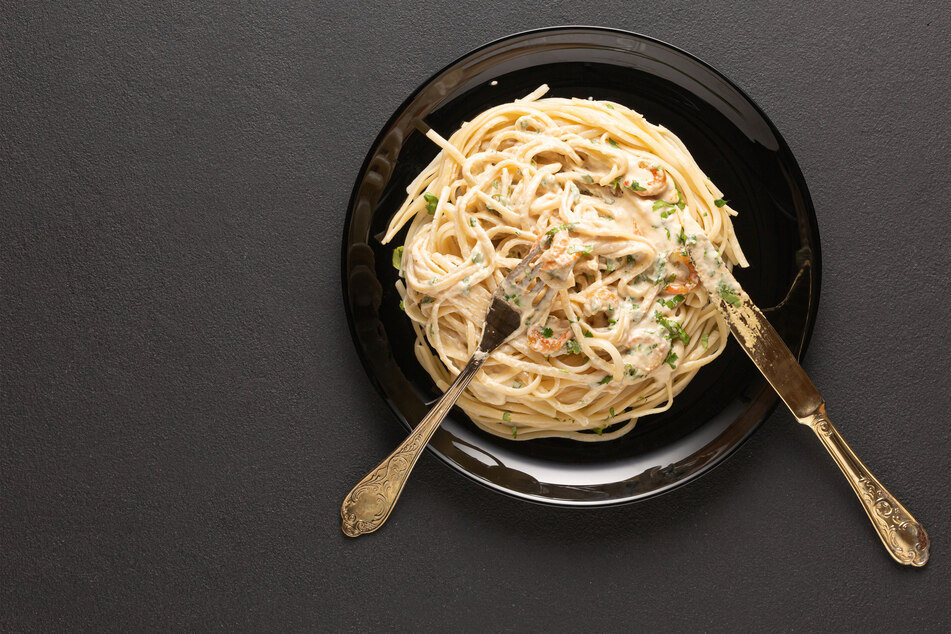
A good Alfredo sauce really hits the spot, but a bad Alfredo sauce can make you feel sick – even if it tastes good. The thing is, it's not supposed to be so sickening, it's supposed to be creamy and light, packed full of flavor, but not so heavy that you can't finish the bowl. Luckily, the solution is simple, it's time to make Alfredo sauce the proper way.
Italian food is far simpler and far fresher than what you'll get in most restaurants in the US. It's about good ingredients and simple recipes, and that's what we've got for you today – here's how to make an authentic and easy Alfredo sauce.
What is Alfredo sauce?
Alfredo sauce is a creamy Italian dish made famous by fettuccine Alfredo, otherwise known as fettuccine al burro. It's named after the man who invented the dish, Alfredo Di Lelio, who invented the dish at his Rome restaurant in the early-to-mid 20th century. It is a simple dish, comprised of only pasta, butter, and parmigiano reggiano.
Having become popular among American travel writers in the 1920s, alternative recipes started to flow into the United States, taking up residence on the menus of Italian restaurants. Nowadays, there are many variations, adding ingredients like shrimps, chicken, and herbs to the mix.
While fettuccine Alfredo is more famous and widespread than it is, or ever will be, in America, it is a genuinely Italian recipe and should be treated as such. There is no cream in Alfredo and, and it should be kept that way.
How to make Alfredo sauce: Recipe
There is nothing simpler than a fettuccine Alfredo, as long as you know what you're doing. It is extremely similar to carbonara in that there is no cream involved and, instead, its creaminess comes from the emulsion between the cheese, fat, and starchy pasta water. As such, while Alfredo sauce is extremely creamy, it is lighter than most people think it should be.
All this being said, to make fettuccine Alfredo you only need a few pieces of equipment:
- A large serving plate
- Medium-large pot for boiling the pasta
- Tongs
- Wooden spoon
- Cheese grater
- Pepper cracker
We are not doing some big over-produced version of fettuccine Alfredo here, so there's no frying or cooking involved except for the boiling of the pasta itself.
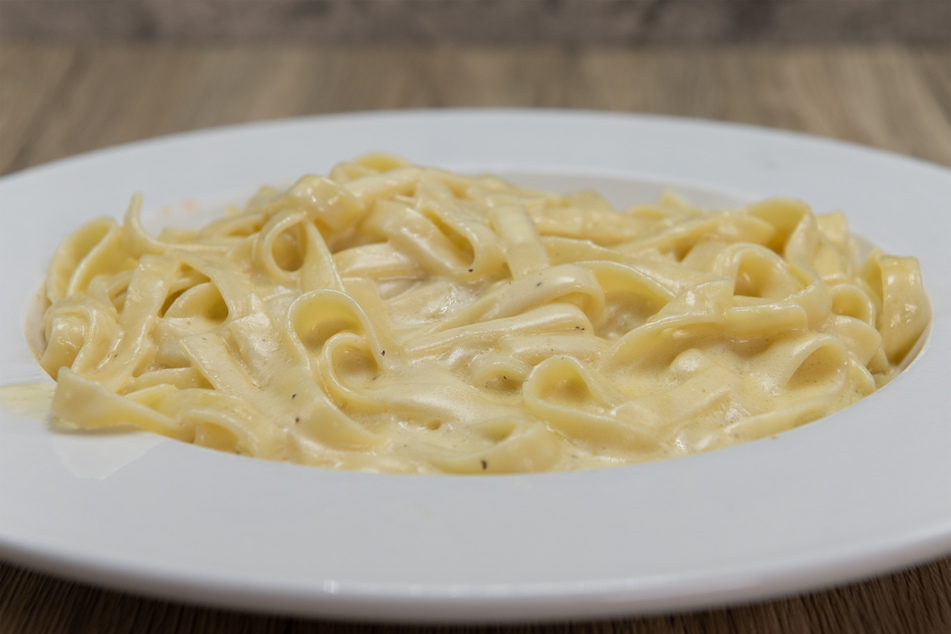
Alfredo sauce recipe | Ingredients
There are three necessary ingredients in fettuccine Alfredo, if you don't include the water and salt. You don't need any olive oil, you don't need any cream, and you don't need any onions or garlic. Italian food isn't over-produced and overcomplicated, it should be simple and easy. What we will do, though, is add a bit of pepper.
These are the fettuccine Alfredo ingredients:
- Pasta (fettuccine), 1 lb
- Butter, 3/4 cup
- Parmigiano reggiano, 2 cups
- Black pepper
On the proportions: We are assuming that each person will eat around half a pound of pasta because it is the only substantial ingredient in this recipe. As such, this recipe should feed two people. If you want to make more or less, increase or decrease the quantities proportionally.
Alfredo sauce recipe | Instructions
There's no frying, there's no real "cooking," and it's incredibly fast. Fettuccine Alfredo or any Alfredo pasta dish, should take you no longer than about 15 minutes to cook from start to finish. It'll take as long as it takes to boil pasta, and that's it. We'll go into variations in a minute, but let's start simple.
Here's how to make fettuccine Alfredo
Step 1: Take a large pot and fill it with water. Make sure that there is a generous amount, so that there is plenty to use later on in the process.
Step 2: Heavily salt the water and bring it up to a rolling boil on your stove top.
Step 3: Add your pasta, stirring occasionally to stop any sticking. Make sure the water maintains a rolling boil. Cook the pasta for around 2 minutes less than the package instructions.
Step 4: While the pasta is cooking, grate your cheese and set it aside. Get the large serving plate and put about half your butter onto it, cutting the butter into smaller clumps and spreading it out.
Step 5: Before the pasta is totally ready, take out about half a ladle's worth of the pasta water and mix it into the butter, helping to melt the butter a little bit.
Step 6: Fill a mug with the salty and starchy pasta water before draining your pasta using a colander.
Step 7: Put your pasta onto the plate and mix it into the melty butter, making sure to get the whole mixture nice and moist.
Step 8: Now add about half the mug's worth of water, as well as the rest of the butter and a couple cracks of pepper. Mix together thoroughly.
Step 9: Add the cheese now, stirring briskly and creating an emulsion between the starch in the water and the fat in the butter. If it isn't getting creamy, or the cream is a bit too thick, add a little more of the conserved pasta water.
Step 10: Check for seasoning and add any extra pepper if needed. You're done! Serve it up!
See, it's super easy, isn't it? You can make a creamy sauce without the need for actual cream - it makes the dish taste more authentic, gives a silkier consistency, and you won't feel sick at the end of it! What's not to love?
About the emulsion: Remember that, much like in cacio e pepe or even carbonara, the water temperature is crucial. Allow your pasta water to sit for a while, and for the pasta to cool a little, before you add the cheese. If you don't, it will likely go all stringy and the emulsion will break.
Other types of Alfredo

It's time to finally address the elephant in the room: Don't you put other stuff in a fettuccine Alfredo? No, you don't. But you can if you want to. As long as you keep the base emulsion the same and don't add any cream, feel free to do whatever you want.
The trick, of course, is to choose ingredients that will match with the buttery cheese sauce you have created. That means keeping things relatively light, and allowing their flavors to pop above the surface.
Some great things to add to a fettuccine Alfredo include:
- Mushrooms
- Chicken
- Shrimp
- Broccoli
- Onion and garlic
- Ham
- Peas
- Spring onions
All of these ingredients should be added after the emulsion has been set, so that you don't hurt the process by adding a different fat, or a dose of acidity that could split the sauce.
To make different types of fettuccine Alfredo: Simply make the dish as you would normally, like we described in the recipe above. Once it is done, mix in your pre-prepared additions. Be thorough when mixing, but make sure that the emulsion doesn't get broken during the process.
Pre-preparing your other ingredients is crucial, as your Alfredo will go cold quite quickly after you have made it. It's best to complete all that prep before you even begin boiling the pasta.
Chicken Alfredo
As we have mentioned, adding things like chicken to an Alfredo is perfectly possible, but should be done strategically. You want to prepare the chicken beforehand, ready to be mixed in when the pasta is all ready to go. Make sure to keep everything simple as well, to let the pasta sauce shine.
How to prepare chicken Alfredo: We would recommend simply chopping the chicken into boneless strips, seasoning it with salt and pepper, and frying it off in a small amount of olive oil. You can also feel free to saute onions and garlic with it, to add those flavors in to the mix as well.
It's incredibly easy to make chicken Alfredo, and can be a great way to add a little protein to the meal, filling you up and giving you a little bit of nutrition in an otherwise unhealthy meal.
Shrimp Alfredo
Shrimp is a bit more of a strange addition to fettuccine Alfredo, as their subtle taste will likely be drowned out by the flavor of the sauce itself. They are also a more expensive ingredient, and don't really fit the flavor profile we've got here. That being said, it is one of the most common and popular additions, so what do we know?
How to prepare shrimp Alfredo: Get some garlic, breadcrumbs, and prawns. Toast the bread crumbs in a little bit of butter with some minced garlic. Once they get a little bit brown, chuck in the shrimp along with a dash of olive oil. As you saute, season the prawns. Then add the mixture to your Alfredo as discussed.
Remember that there is a difference between shrimps and prawns, and you'll want to go with the smaller variant when making shrimp Alfredo. Feel free to toss in some spring onions with this one, it'll add a bit of a zing!
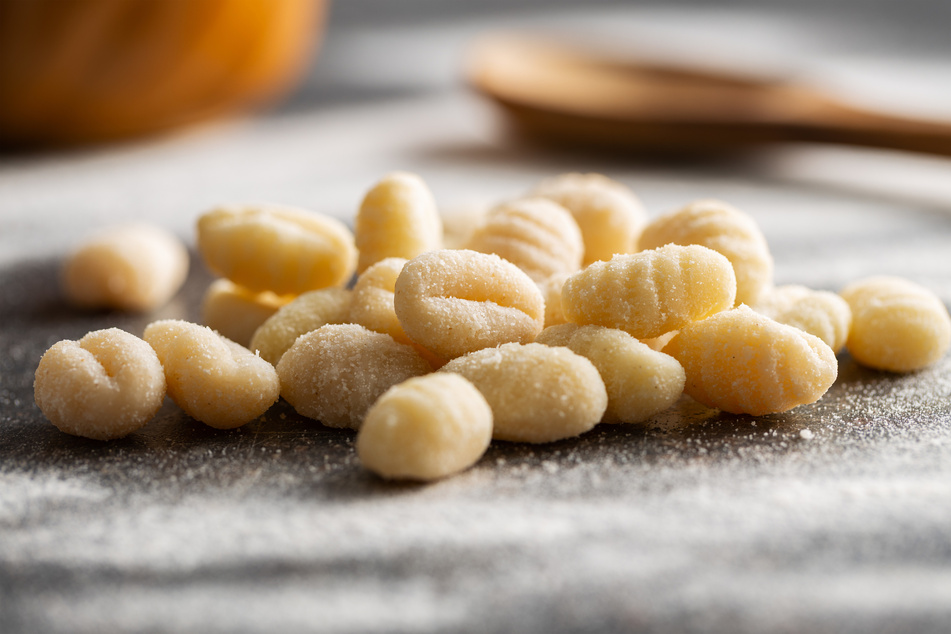
What pasta should you eat with Alfredo sauce?
Alfredo Di Lelio's restaurant was famous for its fettuccine, making this long and flat pasta the most iconic and traditional way to consume Alfredo sauce. That being said, you can pretty much use any pasta you want, as this is an incredibly versatile sauce. In fact, it is a perfect dish to make with homemade pasta, as it allows your creation to shine.
Here are a few suggestions for good pastas to try with Alfredo sauce:
- Buccatini
- Tagliatelle
- Fettuccine
- Spaghetti
- Linguine
- Bigoli
- Ravioli
Your best bet with Alfredo sauce is a long pasta. Bucatini is a great choice as its tubular nature will mean that it fills with the creamy sauce and tastes absolutely fantastic. Ravioli would also be great, as long as you keep the filling simple.
Alfredo sauce is easy, stop over-complicating it!
Alfredo is supposed to be fresh, delicious, and relatively light. It's simply an emulsion of butter and Parmesan cheese, nothing fancy, and nothing too difficult, either. While it's fine to add a few extra things, like some vegetables or proteins as we described above, the sauce itself should always stay the same – and cream should never be used.
You see, Alfredo joins the likes of carbonara, pizza, and other Italian staples that often get butchered when brought across the Atlantic. It's time to simplify things: Stop over-complicating Italian food and it'll become cheaper, healthier, and tastier!
Cover photo: IMAGO/Pond5
